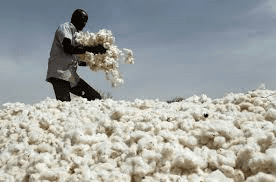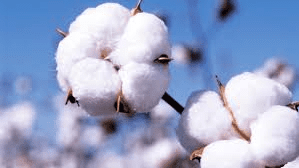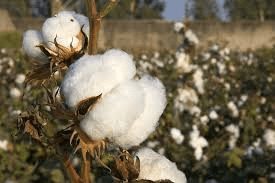Processing, packaging, and exporting cotton involves several important steps to transform raw cotton into a product ready for international markets. The process begins with harvesting the cotton from cotton plants.
Cotton is harvested either by hand or using mechanical harvesters. Once the cotton bolls, which are the pods containing the cotton fibers, are collected, they are transported to a processing facility.
The first step in processing cotton is ginning. Ginning is the process of separating the cotton fibers from the seeds and other debris. At the gin, cotton bolls are opened, and the fibers are cleaned and separated from the seeds.
This is done using machines called cotton gins, which effectively remove the seeds and other impurities, leaving behind clean cotton fibers. The separated seeds are often used for other purposes, such as producing cottonseed oil or animal feed.
After ginning, the cotton fibers are pressed into bales. Baling involves compressing the cotton into large, dense bales to make it easier to handle and transport. The bales are then wrapped in protective material to keep them clean and free from moisture during storage and shipping. Each bale is labeled with information such as the cotton’s origin, grade, and other relevant details.
Next, the cotton bales are packaged for export. Proper packaging is crucial to protect the cotton during transportation. The bales are usually covered with a durable, weather-resistant material to prevent damage from moisture and other environmental factors. The packaging also includes necessary documentation and labels for customs and shipping purposes. This information helps ensure that the cotton is properly identified and meets the import requirements of the destination country.
Exporting cotton involves several logistical and regulatory steps. Cotton exporters must comply with various international regulations and standards, including those related to quality and safety. This may involve obtaining certifications and ensuring that the cotton meets the quality standards required by the importing country. Exporters must also arrange for transportation, which includes coordinating with shipping companies and handling the logistics of moving the cotton from the processing facility to the international destination.
Throughout the entire process, from harvesting to exporting, maintaining the quality of the cotton is crucial. Proper handling, processing, and packaging ensure that the cotton remains in good condition and is delivered to buyers in a state that meets their expectations. By following best practices at each stage, cotton producers and exporters can provide a high-quality product that satisfies global markets.
How to Process Cotton for Exportation

1. Harvesting: Cotton is harvested once the bolls open and the cotton fibers are fluffy. This usually occurs when the cotton has reached full maturity. Use cotton-picking machinery or hand-pick the cotton to ensure minimal damage to the fibers.
2. Ginning: After harvesting, the cotton needs to be separated from the seeds and other debris. This process, called ginning, is done using a cotton gin. The gin removes the seeds and impurities from the cotton fibers, producing clean cotton lint.
3. Cleaning: The cotton lint is then cleaned to remove any remaining impurities such as dirt, leaves, and short fibers. This is usually done using air suction and mechanical processes to ensure the cotton is pure.
4. Carding: The cleaned cotton fibers are then carded, which involves disentangling and aligning the fibers to create a continuous web. This process prepares the cotton for spinning by ensuring the fibers are uniformly distributed.
5. Spinning: The carded cotton is spun into yarn or thread. Spinning involves twisting the fibers together to form a continuous strand. This can be done using various spinning techniques depending on the desired yarn characteristics.
6. Dyeing (optional): If the cotton is to be dyed, it is processed with dye solutions at this stage. Dyeing imparts color to the cotton fibers and is done according to the specific requirements of the export market.
7. Finishing: The spun yarn or thread undergoes finishing processes such as setting, washing, and sometimes treatment with chemicals to improve texture, strength, and appearance. Finishing ensures the cotton meets quality standards.
8. Baling: After finishing, the cotton is compressed into bales. Baling makes it easier to handle, store, and transport the cotton. The bales are tightly packed and secured with baling twine or wire.
9. Quality Control: Conduct quality control checks to ensure the cotton meets export standards. This includes inspecting for fiber quality, cleanliness, and consistency. Proper quality control helps in avoiding issues during export.
10. Documentation: Prepare all necessary export documentation including certificates of origin, quality assurance certificates, and compliance with international standards. Accurate documentation is crucial for smooth customs clearance and compliance.
Read Also: 18 Medicinal Health Benefits Of Araroba Powder (Andira araroba)
How to Package Cotton for Exportation

1. Select Packaging Materials: Choose durable and protective packaging materials such as jute bags, plastic wrap, or cardboard boxes. The materials should protect the cotton from moisture, dust, and physical damage during transit.
2. Determine Packaging Size: Decide on the size and weight of the packages based on customer requirements and shipping logistics. Common sizes include standard bales or custom-sized packages depending on the order.
3. Pack Cotton in Bales: Compress the cotton into uniform bales. Ensure that the bales are tightly packed and secured with appropriate binding materials. Proper packing prevents the cotton from shifting or getting damaged.
4. Seal Packages: Use appropriate sealing methods to ensure the packages are airtight and secure. For bales, use baling twine or wire to prevent opening during transport. For smaller packages, consider using plastic wrap or straps.
5. Label Packages: Clearly label each package with essential information such as product name, weight, origin, and date of processing. Include any specific details required by the importing country, such as certification marks or handling instructions.
6. Include Documentation: Attach necessary export documents such as certificates of origin, quality assurance certificates, and packing lists to each package or keep them readily available for customs inspection.
7. Inspect Packaging: Check that all packages are properly sealed, labeled, and free from defects. Ensure there are no damaged or compromised packages to avoid issues during shipping and customs clearance.
8. Use Cushioning (if necessary): For delicate or high-value cotton, use cushioning materials like bubble wrap or foam inserts to provide extra protection. This helps prevent any damage during handling and transport.
9. Palletize (if applicable): For bulk shipments, arrange the packages on pallets. Secure the packages with straps or shrink wrap to prevent shifting during transit. Palletizing improves handling efficiency and protection.
10. Store Properly: Store packaged cotton in a clean, dry place until it is ready for shipment. Avoid exposure to direct sunlight, moisture, or extreme temperatures to maintain the quality of the cotton.
How to Export Cotton for Profits
1. Conduct Market Research: Research potential markets and identify countries with high demand for cotton. Understand market trends, prices, and competition to position your product effectively.
2. Understand Export Regulations: Familiarize yourself with export regulations and requirements for the target market. This includes tariffs, import restrictions, and quality standards specific to cotton.
3. Find Reliable Buyers: Reach out to potential buyers, importers, or distributors in your target market. Attend trade shows, join industry associations, and use online platforms to connect with buyers interested in cotton.
4. Set Competitive Pricing: Determine a competitive pricing strategy based on production costs, market demand, and profit margins. Consider factors such as quality, packaging, and volume discounts when setting prices.
5. Negotiate Terms and Conditions: Negotiate terms with buyers including payment terms, delivery schedules, and contract conditions. Ensure that both parties agree on these terms before finalizing the export deal.
6. Arrange Logistics: Coordinate logistics and transportation to ensure timely and safe delivery of cotton. Choose reliable logistics providers who specialize in handling agricultural products.
7. Monitor Quality: Implement quality control measures to ensure the cotton meets export standards. Regularly inspect the cotton during processing and packaging to address any issues before shipment.
8. Prepare Documentation: Complete all required export documentation accurately and in compliance with international trade regulations. This includes invoices, packing lists, certificates of origin, and other necessary documents.
9. Promote Your Product: Invest in marketing and promotional activities to increase visibility and attract more buyers. Use online marketing, social media, and trade publications to reach a broader audience.
10. Evaluate and Adjust: Regularly review your export performance and customer feedback. Make adjustments to your strategy as needed to improve profitability and expand your market reach.
Read Also: How to Store Broccoli and Cauliflower
Frequently Asked Questions (FAQ’s) About Cotton

1. What are the main uses of cotton? Cotton is primarily used in the textile industry to make clothing, bed linens, and other fabric products. It is also used in various industrial applications and as a raw material in the production of cottonseed oil.
2. How is cotton processed? Cotton is processed through harvesting, ginning, cleaning, carding, spinning, and finishing. Each step prepares the cotton for use in textiles and other products.
3. What is ginning? Ginning is the process of separating cotton fibers from the seeds and other debris. It is a crucial step in making the cotton ready for further processing and use.
4. How should cotton be stored? Cotton should be stored in a clean, dry place away from direct sunlight and moisture. Proper storage helps prevent contamination and maintains the quality of the cotton.
5. What are the environmental impacts of cotton production? Cotton production can have environmental impacts including water usage, pesticide use, and soil degradation. Sustainable practices and organic cotton farming can help mitigate these effects.
6. How do I determine the quality of cotton? Cotton quality is determined by factors such as fiber length, strength, color, and cleanliness. Quality control measures during processing help ensure the cotton meets industry standards.
7. Can cotton be dyed? Yes, cotton can be dyed in a wide range of colors using various dyeing methods. Dyeing is done during the processing stage to achieve the desired color and appearance.
8. What are the major cotton-producing countries? Major cotton-producing countries include China, India, the United States, Brazil, and Pakistan. These countries have large-scale cotton farming operations and contribute significantly to global cotton supply.
9. What are the common challenges in cotton exportation? Common challenges include fluctuating market prices, regulatory compliance, quality control issues, and logistical difficulties. Addressing these challenges requires careful planning and management.
10. How can I find buyers for my cotton? Finding buyers can be done through market research, attending trade shows, joining industry associations, and using online platforms. Networking and building relationships with potential buyers is key to successful exportation.
Read Also: How to Start an Urban Farm

